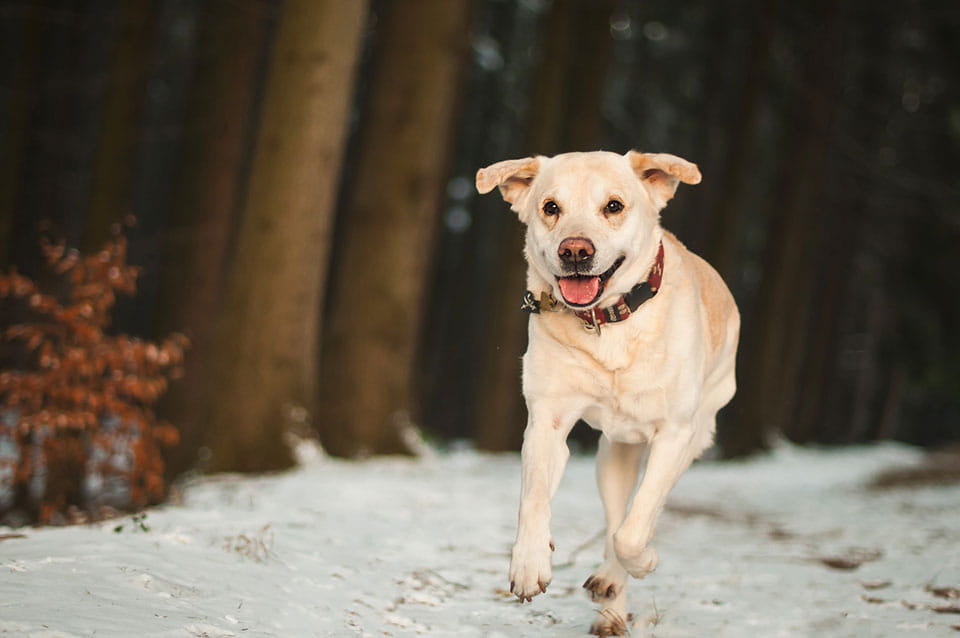The essential accessories for dog walking in winter!
The essential accessories for dog walking in winter!
Which accessories do you need and what will you need to look out for?
One of the great things about owning a dog, is they give you a reason to go outdoors for fresh air and exercise. Even when the weather tempts you to stay in. Just think how energised and awake you feel, after a brisk stroll with your dog in the fresh winter air. But what hazards are out there in winter for you and your dog? What accessories can help make your morning or evening walks more manageable? Find out everything you need to know about winter dog walking right here.
Walking your dog in winter
Winter can be the ideal opportunity to catch a sunset or sunrise with your best friend, due to shorter days. Early morning winter walks can be particularly magical if you find a dry day with a touch of frost. The light quality and stripped bare scenery in winter can be stunning. Plus, there is still lots of wildlife to look out for too; or to chase in the case of your four-legged friend!
However, one of the biggest advantages of morning dog walks on cold days is that you are highly likely to have the park, fields, beach or woodlands all to yourselves! The same is true of evening walks too, as the darkness could be far more peaceful and quiet than you usually experience in other seasons.
What are the dangers of winter dog walking
The above point does lead to a cautionary note that. There are risks to consider at this time of year.
Keeping safe
Evening or early morning walks in darkness do require a few adaptions if you are alone with your pet, particularly for women. You are best to keep to main paths and well-lit parks and let someone know where you are going. It’s always better to be safe than sorry.
Toxins
Watch out for berries, fungi, pondweed and items that could have anti-freeze on them, all of which could prove toxic for your pet. Even eating snow can be a problem. It could be contaminated with common chemicals used to melt ice or to clear windscreens for example.
Falling and slipping
Beware of holes and other hazards an off lead dog could crash into when it's dark and wintery.
What equipment do I need for a dog walk in winter?
Assuming you already have a robust winter coat – preferably a waterproof one – what else is handy to have ready for taking your dog out in less favourable weather?

Walking your dog in winter is a wonderful experience. But it's not without its risks.
Sturdy footwear
There is one thing that winter inevitably brings by the spade load. Mud! Even if you as sensible and stick to paths. So, for dog owners, a pair of wellies or hardy walking boots adds warmth but also keeps your socks and feet dry.
Dog coverings
Some owners invest in dog coats, jumpers and romper suits. Smaller, thinner or short-haired dogs can find this extra layer of insulation makes their walks more enjoyable. Coats and other coverings are not just to keep pampered pooches warm on cold walks though. They can keep your dog cleaner and dryer. Unlike your dog, they can be easily popped into a washing machine for a quick rinse.
Dog cleaning products
However, everyone is likely to need to wash their dog more due to winter mud and rain. So, make sure you have plenty of dog shampoo, conditioner, and old towels ready.
High-vis dog walking equipment
Also, you might want to buy accessories that make life easier for winter dog walks. One of the best inventions for this is collars with lights on. If you let your dog off-lead, you can still locate them when the dusk falls or it’s a dark winter’s day. Also, a reflective collar or vest for dogs can help drivers to see them in the dark, should they venture into the road.
A Torch
It’s very handy to have a torch for dark mornings or evenings walks in winter. Especially if your dog needs to take a toilet break!
Dog comfort and health tips for winter
You can make your winter walks safer for your best friend if you keep the fur around their feet short. Otherwise, it can gather icy moisture or even ice up, which can be uncomfortable or even painful. Also, don’t let your dog spend too much time walking or standing on ice and snow. Frostbite is a serious risk. You can get dog boots to fit your breed if they’re going to be exposed to cold surfaces a lot.
One important task for all dog owners in winter is to wipe your dog's paws gently but carefully when you get home. This is not to protect your carpets! It removes the salt and chemicals that are spread on roads and paths when the weather turns icy; substances that can irritate your dog’s pads or get into their stomach when they lick their paws. Keep an eye on dryness and cracks appearing there too and find a dog paw conditioner or moisturiser to address issues promptly.
Lastly, for older dogs, check their food and supplements to make they're getting enough nutrients to deal with extra aches and pains associated with the cold and damp.
Beyond that, the only other advice is to invent lots of stimulating games and indoor activities for dogs, for when a winter walk is absolutely out of the question!




